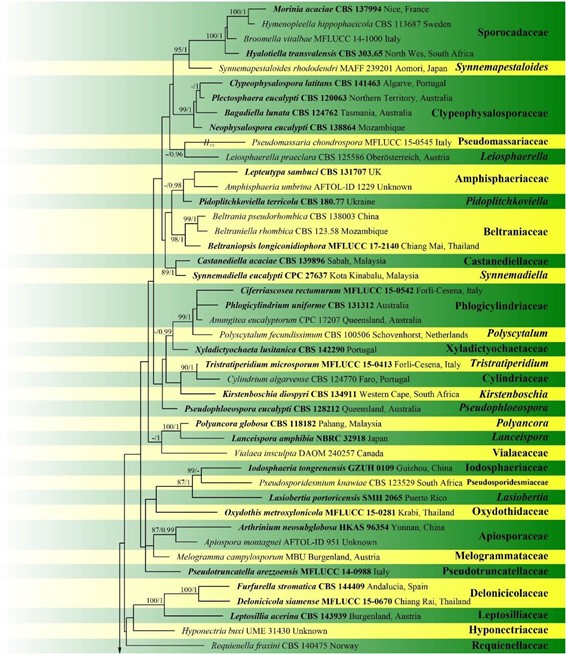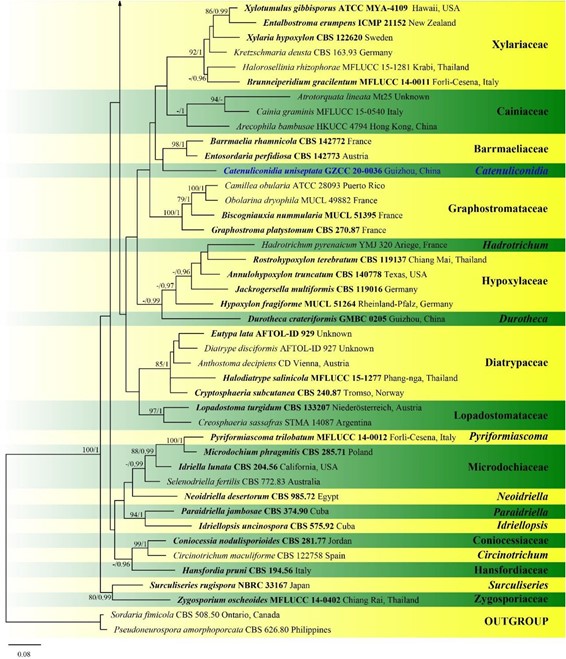Catenuliconidia N.G. Liu & K.D. Hyde, in Yuan et al., Fungal Diversity: 10.1007/s13225-020-00461-7, [97] (2020)
Index Fungorum number: IF 556464; Facesoffungi number: FoF 06116
Etymology – “Catenu-” in reference to catenulate conidia.
Saprobic on decaying wood in terrestrial habitat. Sexual morph: Undetermined. Asexual morph: Hyphomycetous. Colonies on natural substrate effuse, black, velvety. Mycelium mostly immersed, composed of septate, branched, hyaline hyphae. Conidiophores macronematous, mononematous, in groups, erect, straight or broadly curved, brown to dark brown, septate, unbranched, smooth, thick-walled. Conidiogenous cells blastic, terminal, integrated, cylindrical, brown. Conidia catenate, developing in acropetal chains, ellipsoid to cylindrical, septate, septum darkened, constricted at the septum, truncate at both ends, subhyaline to olive green when immature, brown to dark brown when mature.
Notes – In the phylogenetic analysis, Catenuliconidia uniseptata formed a distinct subclade and was basal to the Barrmaeliaceae clade without significant support (Fig. 67). Barrmaeliaceae comprises two genera, Barrmaelia Rappaz and Entosordaria (Sacc.) Höhn. (Voglmayr et al. 2018). Barrmaelia has a Libertella-like asexual morph that is only known from pure cultures (Voglmayr et al. 2018), while the asexual morph of Entosordaria is unknown. Based on morphology and phylogeny, we treat Catenuliconidia in Xylariales incertae sedis.
Type species – Catenuliconidia uniseptata N.G. Liu and K.D. Hyde

Fig. 67 Maximum likelihood tree based on analysis of a combined LSU, ITS and RPB2 sequence dataset representing Xylariales. Boot- strap support values for ML ≥ 75% and Bayesian posterior probabili- ties ≥ 0.95 are given near nodes respectively. The tree is rooted with Pseudoneurospora amorphoporcata (CBS 626.80) and Sordaria fimicola (CBS 508.50). Ex-type or ex-epitype strains are indicated in bold. The new taxon is indicated in blue

Fig. 67 (continued)
Species
